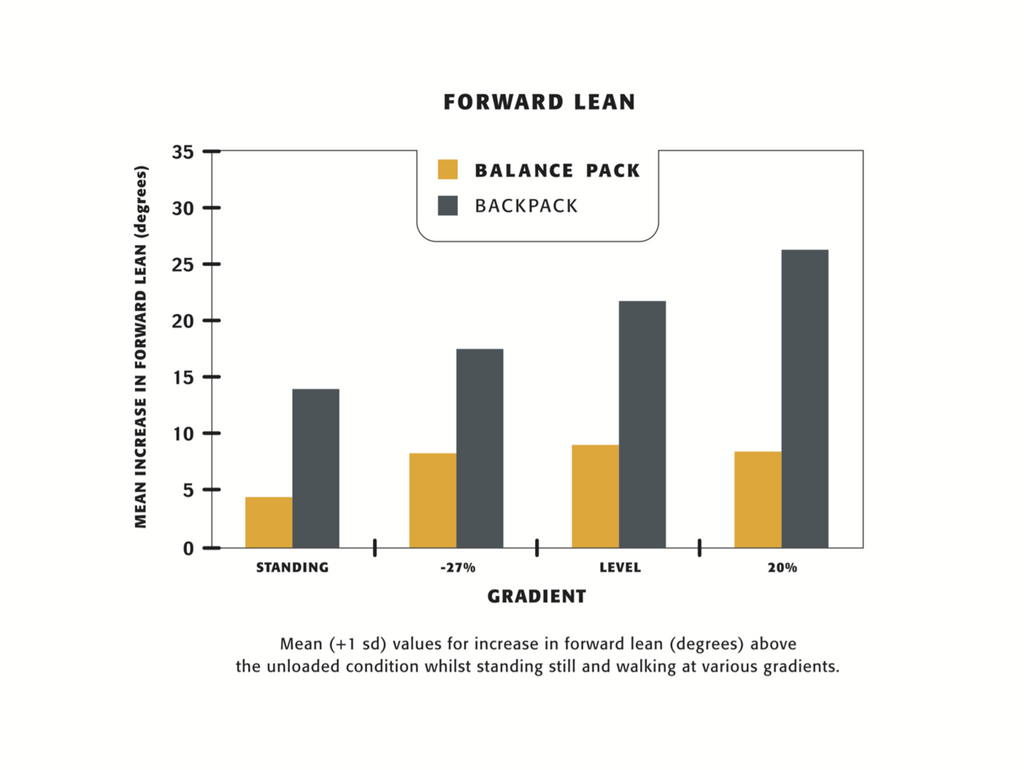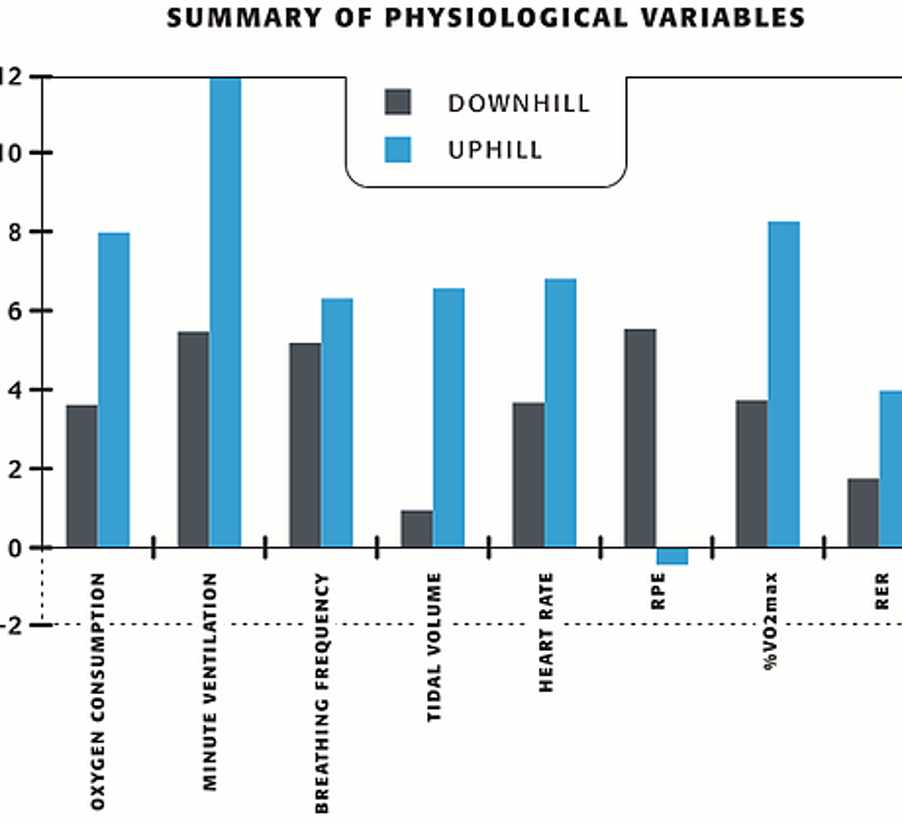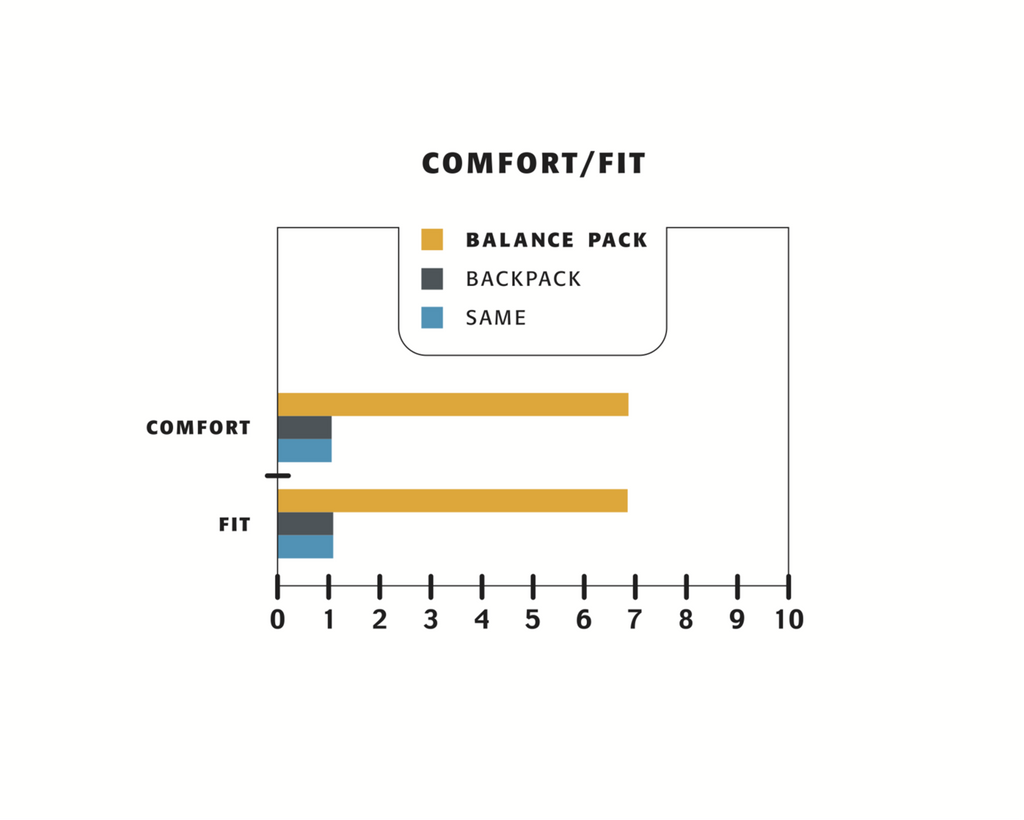Your Cart is Empty
"It doesn't even feel like I'm wearing a pack!"
Increaseyour comfort and reduce fatigue with an Aarn Pack. Aarn Bodypacks and Balance Pockets reduce the energy you expend in a day on the trails. How? Our packs use patented technology and designs to minimise the force and load leveraged on your back.
An Aarn Bodypack and Balance Pockets will always require LESS energy to carry compared to a traditional backpack as they evenly distribute the weight in your pack around your centre of gravity. Even a newer style ultra-light minimalist backpack will require more energy and have higher force and load on your body compared to an Aarn system. You only need a total load of less than 3kg (including all your gear, food and water) to reach significant energy savings when using one of our Body Packs.
Professor Ray Lloyd pioneered the research into Balance Packs and naturally balanced load-carrying systems. His study compared a traditional backpack to anAarn Bodypack and Balance Pocket system. The results were striking and statistically highly significant. Results showed that forward leaning, energyexpenditure and body discomfort were significantly reduced with anAarn Bodypack and Balancing Pocket system when used together.
The amount of forward lean with a Balance Pack is determined by the relative volume of the pack on the back of the wearer and the Balance Pockets in front of the wearer, and the relative density of the items placed in each. By using the largest volume Balance pockets with a small to medium volume pack, and packing your heavier items as far forward and as low down as possible, it is possible to create a naturally balanced load carrying system. This is where the center of gravity of your load perfectly matches the center of gravity of your body, both horizontally and vertically.
Now addition of a load will exert no leverages on your back or shoulders thereby reducing the forces acting on the body. It will not alter your natural posture or your balance and it will facilitate active body movement.
A naturally balanced load carrying system is the most practical, efficent and strain free possible. Combined with our U Flow systems, it facilitates superb balance with the greatest body movement and load stability for dynamic rucsack sports.
When used with the most biomechanically efficient and ergonomic trekking poles, Pacerpoles, and lightweight zero drop 'barefoot' footwear, we expect to see further gains in performance and energy efficency. Future research could be used to verify the extra gains by using the most biomecanically efficient products in combination.
 SUMMARY OF RAY LLOYD’S MOST IMPORTANT RESEARCH FINDINGS
SUMMARY OF RAY LLOYD’S MOST IMPORTANT RESEARCH FINDINGS
This graph compares the horizontal displacement of the center of mass of the Balance Pack and the backpack to the unloaded condition. With the Balance Pack it is very small (2 cm), showing that the center of gravity under load is very close to that without a pack on. In the Balance Pack there was more weight in the pack than the front pockets. If the same weight was in front and behind, then there would have been no displacement of the center of mass in the Balance Pack.

When standing still your posture is upright. Forward lean increases as you shift to walking downhill, it increases further when walking on level ground and is maximum when climbing. When you add a load, the forward lean in each situation is increased.
With a Balance Pack the increase in forward lean is minimal: 4°-8° , due to a minimum displacement of the center of mass. This would have been eliminated if the load was fully counterbalanced.
With a backpack forward lean is substantial: between 14° and 26°.

The increased forward lean under load alters walking patterns. Horizontal ground reaction forces measures the forces on a ground plate as we step onto the plate (the braking phase), and as we step off it (the accelerating phase). Whilst there is not much difference between a Balance Pack and a backpack in the braking phase, the Balance Pack produces smaller forces than the backpack in the accelerating phase, closer to that of unloaded walking. This suggests that the gait is more natural with a Balance Pack than with a backpack.

This graph summarizes the percentage differences between the Balance Pack and the backpack downhill and uphill. The Balance Pack comes out favourably throughout, indicating that the Balance Pack minimises strain on the body under load. The minor exception is RPE walking uphill. RPE is a subjective measure and is the result of subjects noticing a greater contrast in exertion walking uphill with the Balance Pack compared to level ground. Objectively, less energy is being used.
Minute ventilation:measures the volume of air moving through the lungs in one minute.
Tidal volume:measures the volume of air in each breath.
RPE:rating of perceived exertion ( a subjective measure). Going uphill, subjects felt a greater contrast, but were using less energy.
% VO2 max: measures energy use.
RER: respiratory exchange ratio measures the ratio of O2 consumed to CO2 expired.

This graph compares the number of subjects in the study who had a preference in terms of comfort and fit for either a Balance Pack, a backpack, or no preference.
There is a striking preference for the Balance Pack over the backpack for both comfort and fit.

Balance is affected by the position of the center of mass and the resulting forward lean, by your ability to move freely to maintain balance, and to the fit and stability of the pack on your body.
Both downhill and uphill, the Balance Pack was found to give far better balance than the backpack.This implies greater safety in rough and steep terrain with a Balance Pack than a backpack.

Pack stability is determined by how close the center of gravity of the load is to your body, and by the design of the pack harness. The Balance Pack brings the center of gravity of the load close to the middle of the body, and the Flow Motion harness systems allow free body movement. This results in maximum stability both uphill and downhill.
The backpack with its fixed harness is dramatically less stable—to move your body significantly you have to move the whole pack, which in turn affects your balance.

This graph compares the % of subjects experiencing pain in different parts of the body under heavy loads of 22.5 kg. Discomfort and pain was significant in all major body areas with the backpack. Pain was dramatically reduced in the back with the Balance Pack and eliminated in the neck, shoulders and thighs. This is a very important finding. It shows that virtually all the discomfort and pain associated with carrying a load in a backpack is due to the forward lean, and not the weight itself.
Balancing a load at the front and back in a Balance Pack eliminates virtually all body pain, even with heavy loads.
A number of studies have compared energy use between different load carrying systems:
Kirk, J. and Schneider, D. (1992) compared energy use in female subjects using internal and external framed backpacks. Young, C. (2001) compared two backpacks of different shapes- a tall narrow pack and a shorter wider pack. No significant energy differences were found in either study.
Backpacks share the load between the shoulders and the hips, they restrict the free movement of shoulders and hips and they always cause a forward lean with a corresponding pulling back force on the shoulders.
Read, S.A., Whiteside, R.A. looked at lateral stiffness elements in the suspension system of a backpack and found that a means to bring the distribution of the weight forward on the hipbelt improved the comfort. This suggests that adding a loading component to the front of the hipbelt is advantageous compared to having the loading on the back of the hipbelt only.
Lloyd, R. and Cooke, C. (2000) compared the differences in oxygen consumption between a backpack, and a backpack with counter balancing pockets on the front. The counter balanced pack reduced forward lean significantly, reduced discomfort in the back, and eliminated discomfort in the neck, shoulders and thighs. It gave significant energy savings compared to the backpack alone. The energy savings were greatest for heavier loads and when working hardest, such as climbing. In this study a larger proportion of the load was carried in the backpack than in the front pockets so that there was still some induced forward lean.
Heglund N.C., Willems P.A., Penta M.C. & Cavarna G.A. (1995) showed that some African women carrying load on their head can carry a fifth of their weight without burning a single extra calorie; and although larger loads did require more
energy, the increase was only half of that needed by American soldiers carrying loads in backpacks. Some women could carry 70 percent of their weight. This shows that a load carrying system where the center of gravity of the load passes vertically through the center of gravity of the wearer can have very significant energy requirement advantages.
Carrying load on the head maintains an upright posture, places no load on the shoulders and hips, and the hips are free to swing freely. If the hands are not used to stabilise the load, then the arms can also swing freely. Because the load is unstable, this is not a practical way to carry load on uneven terrain, in windy conditions, in bush, or during dynamic movement.
Bastien G.J., Schepens B., Willems P.A. & Heglund N.C. (2005) Energetics of load carrying in Nepalese porters. Science, 308: 1755 showed that Nepalese porters carry loads greater than 20% bodyweight even more economically than African women. Female Nepalese porters, for example, carry on average loads that are 10% of their Mb heavier than the maximum loads carried by the African women, yet do so at a 25% smaller metabolic cost. Nepalese porters routinely carry head-supported loads equal to 100 to 200% of their body weight (Mb) for many days up and down steep mountain footpaths at high altitudes. They climb at a very slow pace with frequent rest stops.
The load carrying system used by the Nepalese porters is a trump line around the forehead, with all weight behind in a wedge shaped container. While the posture is stooped forward, (it is less so than a backpack due to the wedge shaped container), there is no loading on shoulders or hips, and the hips are free to swing freely. Generally the hands are used to stabilise the load. All the weight is transmitted directly down the spine and the porters have well developed muscles either side of the spine to support the spinal loading.
Rome L.C., Flynn L., You T.D. (2006) Biomechanics: rubber bands reduce the cost of carrying loads.
Rome showed that allowing movement between the pack harness /hip belt and the pack load "provides the following ergonomic benefit: it reduces the peak forces on the body. If one wears a 50-lb backpack, the static force exerted on the body is equal to 50 lbs, however during walking or running the peak vertical forces acting on the body increase due to the necessary vertical acceleration of the added mass. During fast walking, the peak increases by 70% (e.g., to 85 lb); and during running, it triples to a 150 lbs. Rome invented the Suspended-load ergonomic backpack which greatly reduces the vertical movement of the load with respect to the ground. This in turn reduces the accelerative forces on the body by 82% during walking and 86% during running. Reducing accelerative forces reduces metabolic cost by 40 Watts and increased endurance, or alternately, it permits the carriage of 12 extra lbs for the same metabolic cost (i.e., for free ). Further, it permits running with heavy loads while avoiding orthopedic injury."
Basnyat B. & Schepens B. The burden of the Himalayan porter (2001) High altitude medicine & biology 2:315-316
Bastien G., Heglund P.A., Schepens B. & Heglund N.C. (2001) No free load for porters in Nepal Arch. Physiol. and Biochem, 109: S1
Bastien G.J., Schepens B., Willems P.A. & Heglund N.C. (2005) Energetics of load carrying in Nepalese porters. Science, 308: 1755
Bastien G.J., Willems P.A., Schepens B. & Heglund N.C. (2005) Effect of load and speed on the energetic cost of human walking. Eur J Appl. Physiol., 94: 76-83
Cavagna G.A., Willems P.A., Legramandai M.A. & Heglund N.C. (2002) Pendular energy transduction within the step in human walking. J. exp. Biol. 205: 3413-3422
Heglund N.C., Willems P.A., Penta M.C. & Cavagna G.A. (1995) Energy-saving gait mechanics with head-supported loads. Nature, 375: 52-55
Kirk, J. and Schneider, D. (1992).” Physiological and perceptual responses to load carrying in female subjects using internal and external frame backpacks.”Ergonomics, 35, 445-455.
Lloyd, R. (1997).“ A comparison of load carriage using two different rucksac designs with unloaded walking”. MSc Thesis, Leeds Metropolitan University, UK.
Lloyd, R. and Cooke, C. (2000). “The oxygen consumption associated with unloaded walking and load carriage with two different backpack designs”. European Journal of Applied Physiology, 81, 486-492.
Lloyd, R. and Cooke, C. (2011). "Biomechanical differences associated with two different load carriage systems and their relationship to economy." Human Movement, Vol 12(1), 65-74.
Read, S.A., Whiteside, R.A. ”Biomechanical assessment of lateral stiffness elements in the suspension system of a rucksack”. Ergonomics Research Group, Queens University, Kingston, Ontario, Canada
Schepens B., Basnyat B., Willems P.A. & Heglund N.C. (2001) Measurement of the loads carried by porters in Nepal Arch. Physiol. and Biochem, 109: S72
Young, C. (2001). “A comparison between two backpacks with various loads on energy expenditure of experienced male backpackers” MSc. Thesis, University of Wisconsin, La Crosse, USA.